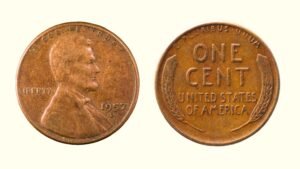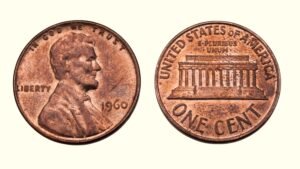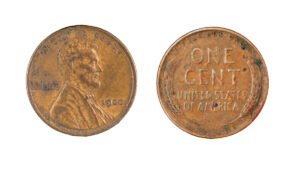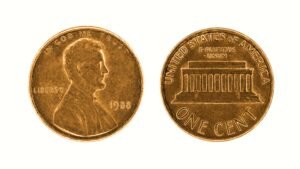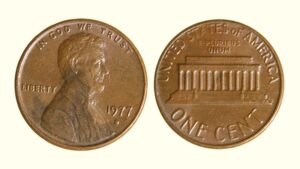If your old coin collection has an old 1936 Lincoln Penny, you just won the lottery! Why? Because this small cent could be worth as much as $16,600 today! But how would you know if your 1936 penny can fetch such much? With the help of this price guide, you’ll learn to spot all valuable features, like high grades, rare mint marks, and mint errors on your Lincoln cent.

The average value of a 1936 Lincoln penny in circulated condition typically ranges from $0.10 to $1.00. However, depending on condition and rarity, some rare 1936 pennies can command prices from $1,000 to $5,000 with some fetching up to $16 ,000!
Brief History of the 1936 Lincoln Wheat Penny
First introduced in 1909 to commemorate the 100th anniversary of President Abraham Lincoln’s birth, the Lincoln Penny had become extremely popular by 1936. This popularity and demand are reflected by its total mintage of almost 380 million coins.
The small cent featured the traditional Lincoln profile on the front and wheat stalks on the reverse. The design remained largely unchanged until 1959 when it transitioned to the Lincoln Memorial design.
The year was also notable for the U.S. Mint’s move to produce coins with varying finishes and, for the first time, experimenting with proof coinage with a satin finish.
| 1936 Lincoln Penny | Key Features |
| Coin Composition | Bronze (95% Copper, 5% Tin & Zinc) |
| Minting Location | Philadelphia, Denver & San Francisco |
| Year of Minting | 1936 |
| Face Value | One-cent |
| Weight | 3.11 grams |
| Diameter | 19.05 mm |
| Thickness | 1.52 mm |
| Designer | Victor David Brenner |
| Mint Marks | No Mint Mark (Philadelphia Mint) D-mint mark (Denver Mint) S-mint mark (San Francisco Mint) |
| Total Mintage | 379,387,569 |
Identifying a 1936 Lincoln Penny (Design & Physical Features)
Understanding how to identify a 1936 Lincoln penny is crucial before assessing its value. Here’s a detailed breakdown of the cent’s design elements, composition, and features.
1936 Lincoln Penny Obverse:
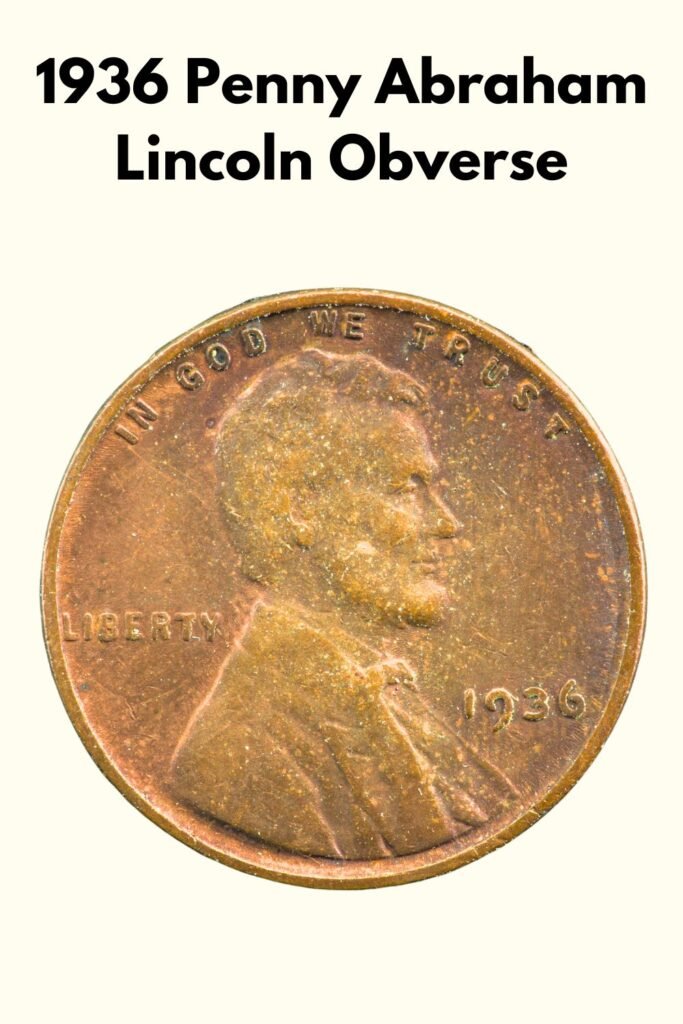
- A right-facing profile of Abraham Lincoln
- “IN GOD, WE TRUST” on the top
- “LIBERTY” on Lincoln’s left
- The mint date “1936” to the Lincoln’s right
- The mint mark “S” or “D” (if present) below the mint year
1936 Lincoln Penny Reverse Design:

- The denomination “ONE CENT” at the center
- Two wheat ears/stalks framing the denomination
- “E. PLURIBUS UNUM” written on the top, along the edge
- Words “UNITED STATES OF AMERICA” written right below the face value/denomination
Coin Composition, Weight & Dimensions
The 1936 Lincoln penny is composed of 95% copper and 5% zinc, giving it a distinctive weight and a unique copper-red luster and a distinctive weight of around 3.11 grams. This composition remained unchanged until 1982, when the United States Mint introduced copper-plated zinc pennies!
Besides, the 1936 wheat penny has a diameter of 19.05 mm and a thickness of 1.52 mm with a plain and uniform smooth (non-reeded) edge. These standard characteristics can help you identify whether your 1936 cent is genuine or counterfeit!
Finding a 1936 Lincoln Penny Coin Value (5 Key Factors)
| Coin Grades | 1936 No Mint Mark Penny Value | 1936 D Penny Value | 1936 S Penny Value |
| Poor (0) to Extremely Fine (XF45) | Face Value to 30 cents | Face Value to 50 cents | Face Value to 50 cents |
| Almost Uncirculated (AU50) to Mint State (MS60) | 80 cents to $5 | 80 cents to $8 | $1 – $8 |
| Mint State (MS61 – MS64) | $5 – $11 | $8 – $15 | $10 – $25 |
| Mint State (MS65 – MS66+) | $12 – $155 | $15 – $200 | $30 – $350 |
| Mint State (MS67 – MS67+) | $130 – $1,620+ | $200 – $1,130+ | $300 – $5,060+ |
| Mint State (MS68 or Above) | $16,620 (MS68) | $1,150 – $3,000+ | N/A |
To assess the real value of your 1936 Lincoln copper cent, you must analyze the four most important factors listed below:
1. Coin Grading and Condition
A 1936 penny’s condition is a vital part of determining value. Generally, a coin’s condition is professionally assessed (by coin grading services like PCGS and NGC) using a grading scale ranging from Poor (P-1) to Perfect Uncirculated (MS-70). The higher the grades, the better the condition and the more valuable the penny!
For example, a 1936 wheat penny in the highest grade, MS68, was sold for a staggering price of $16,620 at Heritage Auctions, while the same coin in MS65 grade is worth $10-$25.
2. Coin Toning & Color of 1936 Lincoln Penny
While all the new 1936 Lincoln cents are red in color, the color changes with time due to oxidation. This toning plays a critical role in its value.
- Red (RD): Pennies that retain their original reddish hue are considered “Red” and are the most valuable. The value of Red 1936 pennies can range from $12 for low-grade examples to over $5,000 for high-grade uncirculated coins.
- Red-Brown (RB): These coins display a mix of red and brown hues. They are generally less valuable than Red coins but can still command prices from $5 to $100, depending on condition.
- Brown (BN): Brown coins, which have lost most of their original color, are usually the least valuable, with prices starting around $0.10 to $5. However, rare brown coins in excellent condition or with rare errors can fetch higher amounts.
3. 1936 Lincoln Wheat Cent Mint Marks
The 1936 Lincoln penny was minted in three locations, each with varying mintages and values.
1936 No Mint Mark Penny (Mintage – 309,632,000)
The Philadelphia Mint, which released the coins with no mint mark, produced the most 1936 pennies, making them the most common of all. While circulated in 1936 no mint mark pennies are worth a few cents, higher grade examples can reach up to $1,600, with MS68 examples reaching $16,600!
1936 D Lincoln Penny (Mintage – 40,620,000)
The Denver Mint produced over 40 million 1936 Lincoln cents, bearing the small D mint mark. The 1936 D penny coins are slightly scarcer; MS66 examples can fetch around $50-$65, with MS68 grades reaching up to $3,000 or more.
1936 S Lincoln Penny (Mintage – 29,130,000)
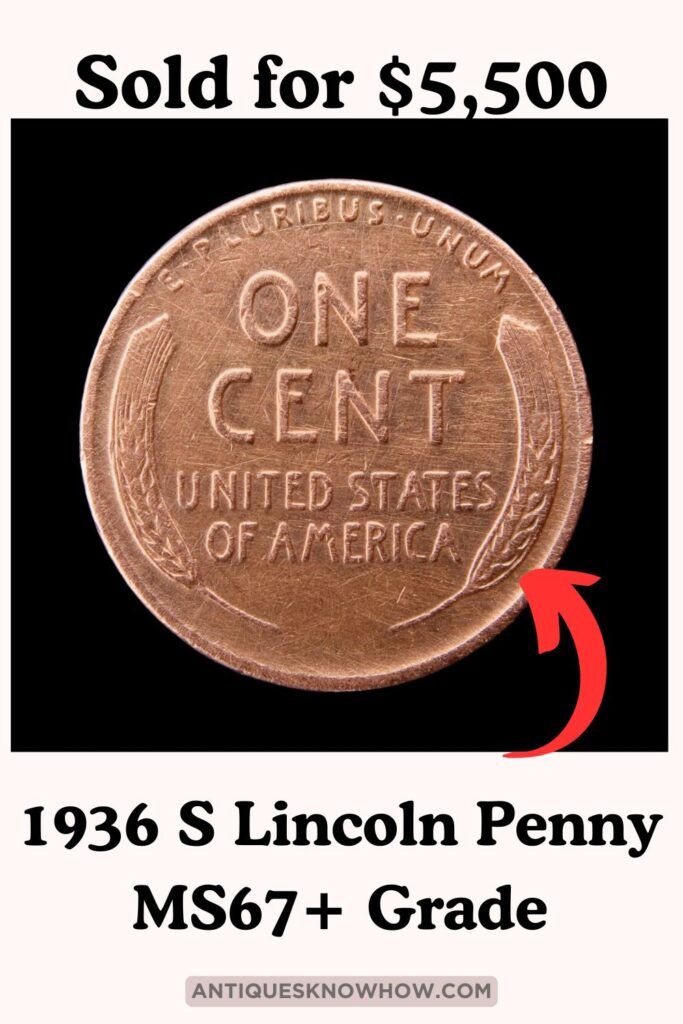
The San Francisco Mint produced the least circulated 1936 Lincoln pennies, identified by the S mint mark. The value of a 1936 S Lincoln penny ranges from $10 to $150 in MS61 to MS66 grades, while higher grades may fetch $220 to $5,000 or more!
4. 1936 No Mint Mark Proof Penny (Mintage – 5,569)
Apart from the regular business strike coins, the Philadelphia Mint also released over 5 thousand 1936 proof cents. Although these coins also don’t have any mint marks, you can spot them by their unique, high-quality proof finish and sharp design details.
The U.S. Mint released two types of proof coins:
1936 1C Proof Type I (Satin Finish)
These proof coins have a satin-like surface with a soft appearance, with values ranging from $250 to $5,000 in PR61 to PR65 grades. PR66 examples can fetch $2,000 to $4,200 while PR66+ grades are worth $13,000 to $18,000. The highest value of a 1936 1C proof Type I is $18,250, sold on David Lawrence, RC.
1936 1C Proof Type II (Brilliant Finish)

Type II proof coins feature a brilliant, reflective surface, like regular proof coins. The value of these coins ranges from $300 to $2,700 in PR62 to PR65 grades, while higher grades can fetch exceptional values of $2,500 to $19,500!
Some of the 1936 Type II proof coins also feature a strong contrast between the raised designs and reflective fields, known as “Cameo.” High-grade Red 1936 1C Cameo proofs can sell for as high as $21,000 in PR66 grade. PR61 to PR65 examples are worth $1,500 to $9,700!
5. Valuable 1936 Penny Minting Errors
Mint errors can significantly impact the value of the 1936 Lincoln penny. Here are some notable errors:
Double Die Obverse (FS-101)
This error occurs due to a defective die with a doubled design, which is then impressed to the 1936 penny. To spot this error coin, look for doubling on the obverse (front) side, particularly noticeable in the date, “LIBERTY,” and “IN GOD WE TRUST.”
The FS-101 variety focuses on a strong doubling, especially on the date and “IN GOD WE TRUST” The value of a 1936 1C DDO (FS-101) coin ranges from $570 in lower grades to over $4,500 for MS66+ grades.
Double Die Obverse (FS-101)
Similar to the FS-101, this is another double-die variety, but with a different doubling pattern. The FS-102 shows a strong doubling on IN GOD WE TRUST, with a less pronounced doubling on other elements.
The values for this DDO variety range from $3,200 to $11,000 in MS64 to MS65 grades, while MS66 and MS66+ examples can fetch $7,500 to $14,000 or more!
Major Die Break
A die break happens when a piece of the die cracks or breaks off during the minting process. This results in a raised, irregular line or blob on the coin. For a 1936 Wheat Penny, look for prominent raised areas on the surface, especially near the rim.
The average value of a 1936 Lincoln wheat cent with a die break depends on the size and location of the break. typically ranging from $20 for minor breaks to $200 or more for major, unusual breaks.
Apart from this, look for common minting errors such as off-center strikes, re-punched mint marks, and curved clips on your 1936 copper penny. They can also significantly increase its value!
Note: This article is intended for informational, educational, and entertainment purposes only. Some images are illustrative and may not represent actual brands, products, or related entities. All trademarks, product names, brand logos, packaging, and other intellectual property referenced remain the exclusive property of their respective owners. Any brand mentions or references are provided solely for descriptive and educational context and do not imply any formal or commercial association.



